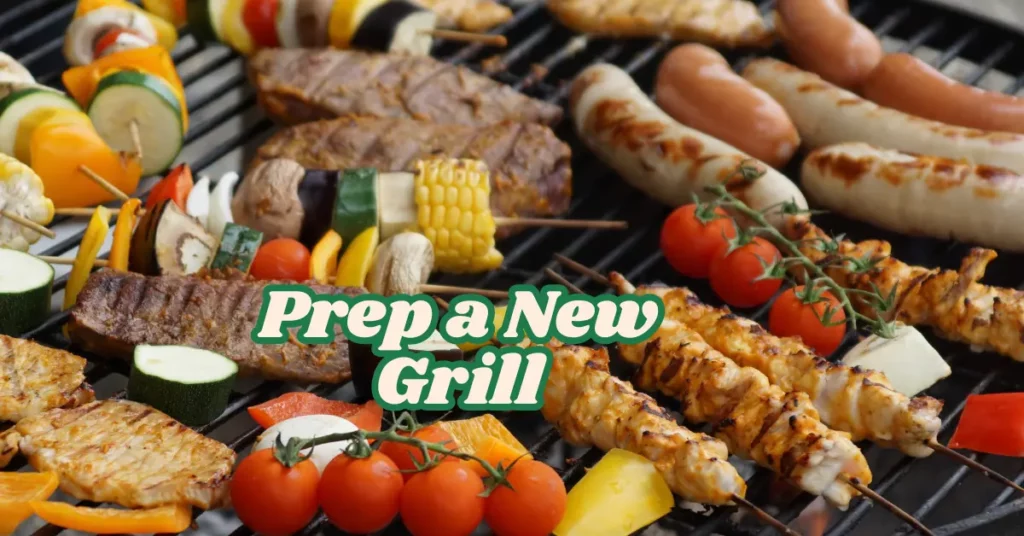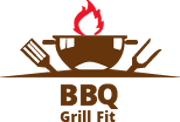This post may contain affiliate links. If you use these links to buy something we may earn a small commission. Thanks.
Getting a new grill is an exciting moment, whether you’re upgrading your backyard BBQ setup or diving into grilling for the first time. But before you toss on the burgers or smoke that first brisket, there’s a critical first step: properly prepping your new grill. Prepping your grill ensures it performs well, lasts longer, and delivers delicious, clean-tasting food.
In this guide, we’ll walk you through everything you need to know to safely and effectively prepare your new grill whether it’s gas, charcoal, or electric.
Unboxing and Assembling Your Grill
1.1. Check the Package Contents
Before assembly, lay out all parts and cross-reference them with the manual. Manufacturers often include a list of components double-check to make sure nothing is missing or damaged during shipping. This step can save frustration down the line.
1.2. Read the User Manual
Don’t skip the manual. While each grill type shares similarities, every brand and model has unique setup instructions and safety guidelines. Follow them closely, especially for gas lines and electrical parts.
1.3. Assemble According to Instructions
Use the recommended tools (usually a screwdriver and wrench). If your grill requires gas connections, double-check fittings for a tight seal, but don’t overtighten. Assembly can take anywhere from 30 minutes to 2 hours depending on complexity.

Safety Checks Before First Use
2.1. Inspect for Damage
Look for dents, scratches, or misaligned parts. Even minor damage can affect performance or pose a fire risk. Contact customer service if anything looks off.
2.2. Gas Leak Test (for Gas Grills)
After connecting the propane tank or natural gas line, perform a leak test:
- Mix water with a few drops of dish soap.
- Brush the soapy solution over connections.
- Open the gas valve slightly.
- Look for bubbles—bubbling means a leak.
Tighten connections if needed, and repeat the test. Never light the grill until it passes the leak test.
Cleaning the Grill Before Use
3.1. Remove Manufacturing Residue
New grills often come with a coating of oil, dust, or metal shavings from the factory. These residues can affect flavor and safety.
3.2. Wash Removable Parts
Take out the grates, heat shields, drip pans, and any accessories. Wash them in warm soapy water, rinse thoroughly, and dry completely.
3.3. Wipe Down the Interior
Using a damp cloth, wipe the inside of the lid, firebox, and side shelves. Avoid harsh chemicals water and a little dish soap are enough.
Seasoning the Grill (Especially for Cast Iron Grates)
4.1. What Is Seasoning and Why Do It?
Seasoning is the process of coating the grates with oil and heating them to create a non-stick, rust-resistant surface. It also helps burn off any lingering residues.
4.2. How to Season Your Grill
- Choose the Right Oil: Use a high smoke point oil like canola, avocado, or grapeseed.
- Apply a Thin Coat: Rub oil onto the grates with a paper towel or brush. Don’t overdo it—too much oil can get sticky.
- Heat the Grill: Turn on your grill (or start your charcoal fire) and heat to 400–500°F. Let it run for 20–30 minutes.
- Let It Cool Naturally: Turn off the heat and allow it to cool without opening the lid.
Repeat seasoning 2–3 times for the best results, especially with cast iron grates.
Burn-Off Process (Initial Preheating)
5.1. Why Burn Off Is Important
Burning off your grill before cooking helps eliminate any chemical residues or oils from the manufacturing process. It’s like giving your grill a fresh, clean slate.
5.2. How to Do It Properly
- Turn on your grill to high heat.
- Close the lid and let it run for 20–30 minutes.
- Watch for smoke this is normal and part of the cleaning process.
Once the smoke dies down, your grill is ready to cook.
Checking Essential Accessories
6.1. Thermometer Calibration
Many grills include a built-in thermometer, but these are often inaccurate. Consider buying a digital thermometer and test the internal temperature to see if it matches.
6.2. Drip Tray Setup
Install and inspect the drip tray. A clean and properly placed drip tray helps prevent flare-ups and grease fires.
6.3. Tool Hook and Storage Options
Check that side shelves, utensil hooks, and any built-in storage are secured. Having your tools nearby makes the grilling process more efficient and enjoyable.
Choosing the Right Fuel
7.1. Gas Grills (Propane or Natural Gas)
Ensure you’re using the right type of gas and that your tank is full or connected properly. Use a regulator rated for your grill’s BTU output.
7.2. Charcoal Grills
Choose between briquettes (longer burn) or lump charcoal (hotter and cleaner burn). Use a chimney starter instead of lighter fluid to avoid chemical flavors.
7.3. Electric Grills
Confirm the voltage and make sure your outlet can handle the draw. Use outdoor-rated extension cords if needed.
8. First Test Run (Without Food)
8.1. Heat Up and Monitor
Turn on the grill and allow it to come to temperature. Watch for any inconsistencies—uneven flame, cold spots, or delayed ignition.
8.2. Check for Odors
A little smell is normal during burn-off, but if you detect strong chemical odors or gas, turn it off and inspect.
8.3. Let It Cool Down Safely
Never rush cooling. Give the grill time to settle before touching or cleaning again.
Initial Cooking Tips
9.1. Start Simple
For your first meal, keep it easy burgers, chicken breasts, or veggies. These are forgiving and help you get used to temperature control.
9.2. Use a Thermometer
To avoid over- or undercooking, use a digital meat thermometer until you’re confident with timing and grill feel.
9.3. Avoid Sauces Early On
Sugar-based sauces burn quickly. Wait until the last 5–10 minutes of cooking to add BBQ sauce or glazes.
Maintenance After Initial Use
10.1. Clean Grates After Every Use
While the grill is still warm, brush the grates to remove leftover food. A stainless-steel or brass brush works well.
10.2. Empty Drip Tray Regularly
A full drip pan can overflow and cause fires. Check it every few cooks and clean as needed.
10.3. Cover Your Grill
Protect your investment with a durable grill cover. It guards against weather, dust, and critters.
Final Thoughts
Prepping a new grill is more than just a checklist it’s a ritual that sets the stage for every great cookout to come. Taking the time to clean, season, and test your grill not only improves performance but also protects your investment and ensures food safety.
Think of it like breaking in a new pair of shoes: a little care upfront makes everything more comfortable and rewarding in the long run. Whether you’re grilling hot dogs on a summer afternoon or searing steaks for a special occasion, a properly prepped grill will serve you well for years.
So fire it up, season those grates, and let the good times (and the flavor) roll.
